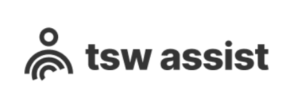13. UV or sun. UV therapy or sun exposure can be helpful in the later stages of TSW when the skin is no longer hot and red. If getting sun, cooler sun in the early morning or early evening is best. When skin is no longer full body flushing, weeping, or open, prescription phototherapy (narrowband UVB light therapy) can be a good option to deal with itching and patchy skin.
14. Patch testing. Patch testing the skin by dermatologist trained specifically to conduct contact dermatitis patch testing can help determine possible allergens or triggers that may be causing the skin to react. Note: This test requires the skin of the back to be steroid-free and clear prior to testing.
15. Essential oils. Some members have found using essential oils to be helpful, especially for relaxing aromatherapy. Some oils are meant only for aromatherapy. It is important to consult a certified aromatherapist prior to use on the skin, as certain oils are considered “warm oils” and may burn the skin. All oils used on the skin should be therapeutic grade, used in proper dilution with a carrier, and patch tested prior to use.
16. Domeboro. Domeboro Solution mixed with water and kept in the refrigerator can help sooth the ooze and burn. It can also help dry the itch or oozing. Caladryl can also help with minor itch and oozing.
17. Avoid triggers. Some members note that certain dietary or environmental factors make their itching and flaring worse. Discovering which triggers to avoid is individual and often done by trial and error. The most common dietary triggers reported by members include: sugar, alcohol, chocolate, nuts, eggs, gluten, and dairy. The most common environmental triggers include: pets, dust, grasses, pollen, and certain chemicals found in personal care or household products.
18. Car kit. It seems like the car is a place that often brings out the itch, especially for the kids. Being hot in a car seat or just being bored is not fun. Have plenty of things to keep your kids busy in the car, such as an iPad, video games, books, Legos, coloring books and snacks. Ice packs can also be very helpful in the car.
19. Hands. Keep your hands busy. iPad, reading, movies, video games whatever you enjoy that will keep your mind and hands busy during the itch will help.
20. Leave guilt at the door. Some individuals experience feelings of guilt for not being their best self during withdrawal, or believing that they brought the problem on themselves. Some parents have feelings of guilt, believing that by using steroids on their child they are somehow responsible for their TSWS symptoms. These feelings of guilt are understandable, but unwarranted. TSWS symptoms is only just starting to be recognized by the medical community. This is a learning process for all of us as patients and doctors.
21. Depression. Topical Steroid Withdrawal Syndrome is very hard on everyone involved. If you feel depressed, please search out a good therapist or support system that can help you during withdrawal, and possibly even afterwards to deal with what many veterans describe as PTSD post-recovery aftermath.
22. Support groups. Use the ITSAN support group! Bond with others going through TSW Syndrome. The people going through it get what you are going through and are very supportive and loving, so take advantage of the private Facebook support groups.
23. Expect the unexpected. Flares can come out of nowhere for no known reason. A terrible day can be followed by a period of calm and comfort. And just when you think you may be getting through it, a late stage flare can knock you off your feet. Topical Steroid Withdrawal Syndrome is a roller coaster ride so be prepared for a lot of ups and downs.

